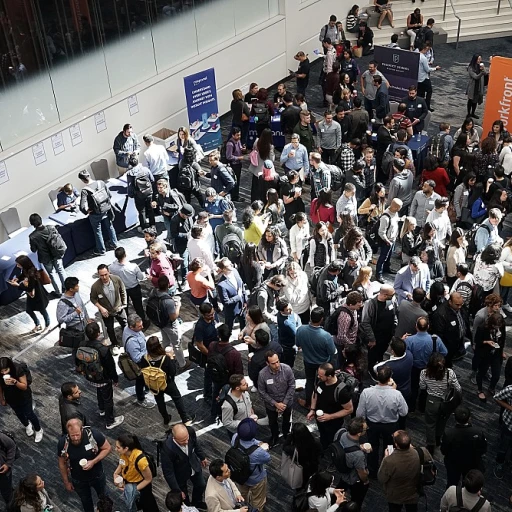
Understanding Employee Experience in the Digital Age
Digital Transformation in Employee Experience
In today's fast-paced digital landscape, enhancing the employee experience has become a pivotal goal for businesses of all sizes. As companies strive to optimize their processes, it's essential to consider how technology, particularly digital solutions, is redefining the way organizations approach their workforce. With seamless access to critical services like payroll, benefits administration, and time attendance systems, employees are gaining a more streamlined and responsive experience.
The integration of apps tailored for employee service, such as employee login apps, has empowered individuals to easily view pay statements, set direct deposit details, manage data, and access pay-related services. Through mobile app platforms, employees can engage with their employers in real-time, facilitating internal communications and providing a comprehensive service experience.
As digital solutions become more entrenched in everyday business operations, small businesses and enterprises alike can leverage cloud-based platforms to support a more agile workforce management system. The ability to change statements, manage payroll tax obligations, and provide benefits links directly into the overall employee experience.
Next, we'll explore how artificial intelligence is playing a critical role in refining these seamless login systems, offering not just convenience but enhancing overall employee satisfaction and efficiency.
The Role of AI in Streamlining Login Processes
AI's Contribution to Simplifying Login Procedures
Artificial intelligence is reshaping how employees interact with technology in ways that significantly impact the employee experience. In the realm of HR, one area that's often overlooked yet crucial is the login process. Seamless login systems greatly enhance daily operations within a business, especially when powered by AI. Consider the time saved when login processes are automated. AI tools can streamline this procedure, enabling employees to access their needs without delays. This aids in view benefits, manage employees, or access pay and pay statements effortlessly. Employees no longer need to remember multiple passwords with the advent of AI-driven single sign-on solutions, thereby reducing login-related stress and boosting overall workforce productivity. Additionally, AI can support businesses by integrating payroll tax computations and direct deposit processes. For instance, in a small business setup, these tasks can burden the HR team. AI solutions help payroll management by automating tax computations and time attendance logs. This automation not only enhances efficiency but also ensures accuracy. Cloud-based services go a step further, offering apps that allow the workforce to access employee data even on mobile devices. This flexibility means employees can review statements or change information remotely, further promoting a sense of autonomy and satisfaction with their employer. As technology evolves, businesses must continue to adopt these AI-enhanced processes for comprehensive HR services. For those interested in a more holistic approach to improving employee interactions within the workplace, an AIHR resource on enhancing employee well-being also provides valuable insights into how HR integrations can support mental health. Integrating mental health support into technology infrastructures goes hand-in-hand with advanced login systems to create a supportive and efficient employee service ecosystem.Security and Privacy Concerns with AI-Driven Logins
Ensuring Safety in Automated Access Systems
As businesses increasingly integrate AI-driven logins to enhance employee experience, the focus on security and privacy remains paramount. While streamlining the login process can greatly improve employee efficiency and satisfaction, organizations must ensure that these systems are safe and secure.
The use of AI in login systems holds the potential to revolutionize how employees access various services, such as payroll, benefits administration, or internal communications. However, these advancements come with the responsibility of safeguarding sensitive data to protect the workforce and maintain trust between employers and employees.
To combat potential security threats, AI technologies need to incorporate advanced encryption methods and continuously update security protocols. These measures are crucial in protecting sensitive information, including employee payroll tax and pay statements, from potential cyber threats. Additionally, employing a cloud-based infrastructure can offer an extra layer of protection, offering secure service to clients around the clock.
Moreover, privacy policies should be transparent, and the systems should allow employees control over their data. Small businesses, in particular, might face challenges balancing efficiency with security due to limited resources. However, with the right strategic support, they can still implement robust systems that manage employees' data with integrity and confidentiality.
For employers aiming to provide a comprehensive employeexperience app, understanding the importance of quality security measures in AI-driven systems cannot be overstated. Thoughtful integration, with a clear emphasis on security and privacy, ensures positive outcomes not just for employee experience, but also for the business as a whole. For further reading on this topic, check out how seamless login systems can foster a preventative security mindset in HR departments and enhance employee engagement with AI in HR management.
Case Studies: Successful AI Implementations in HR
Real-World Examples of AI in Employee Login Systems
Implementing AI-driven login systems can provide significant support to HR departments and elevate the employee experience. Let’s delve into some illustrative case studies of successful AI integrations in human resources, focusing specifically on the seamless access and security they offer. One business successfully employed AI to streamline employee login processes across its workforce. By integrating an intelligent access management system, employees could easily sign into payroll platforms to view pay statements, manage tax details, and set direct deposit options. This cloud-based solution not only simplified the login process but also offered a comprehensive overview of benefits administration. Another company adopted AI for managing employee service systems, realizing enhanced efficiency in handling service requests and internal communications. They implemented an app that enabled mobile on-the-go access to their employee services, such as checking time attendance, accessing pay change statements, and reviewing retirement plans. This robust system removed many common barriers, ensuring that employees could effortlessly manage their time and benefits, improving both productivity and satisfaction. In the realm of small business management, AI has proven invaluable in facilitating direct employee interaction. For example, a small business utilized an AI-supported app to offer an inclusive employee experience by introducing real-time support for login-related issues, time tracking applications, and secure payroll tax services. With AI-driven service, clients reported increased employee delight and decreased administrative burdens. These case studies highlight how businesses can leverage AI to enhance accessibility and manage employee data, ultimately fostering a more efficient and user-friendly environment. By embracing AI, employers can offer better support to their workforce while ensuring that security and privacy concerns are meticulously managed.Balancing Automation and Human Touch
Finding the Right Balance
In the evolving landscape of human resources, the integration of AI-driven systems for employee login and management processes offers a double-edged sword. On one hand, automation streamlines access to payroll, benefits, and other essential services, enhancing the overall employee experience. On the other hand, it raises concerns about maintaining the human touch in interactions that are inherently personal.
For businesses, particularly small businesses, the challenge lies in balancing efficiency with empathy. AI can significantly reduce the time employees spend on administrative tasks, such as accessing pay statements or managing benefits through a cloud-based app. This efficiency allows HR teams to focus more on strategic initiatives and employee support, rather than getting bogged down in routine processes.
Human Touch in Automated Systems
Despite the benefits of automation, the human element remains crucial. Employees value personalized service, especially when it comes to sensitive areas like payroll tax issues or retirement planning. Employers must ensure that while AI handles the bulk of data management and time attendance tracking, there is still a robust support system in place for more complex inquiries.
Internal communications play a pivotal role in this balance. Clear and empathetic communication from HR can help manage employees' expectations and provide reassurance that their needs are being met, even as technology takes on a larger role. This is where the employee service aspect becomes critical, ensuring that the workforce feels valued and heard.
Leveraging AI for Comprehensive Service
AI can be leveraged to provide a comprehensive service that supports both the employer and the employee. For instance, AI-driven employee experience apps can offer personalized insights and recommendations, helping employees navigate their benefits administration and set direct deposits with ease. This not only improves the employee login experience but also enhances overall satisfaction.
Ultimately, the goal is to create a seamless integration where AI and human resources work hand in hand. By doing so, businesses can provide a service that is both efficient and empathetic, ensuring that the human touch is never lost in the pursuit of technological advancement.












